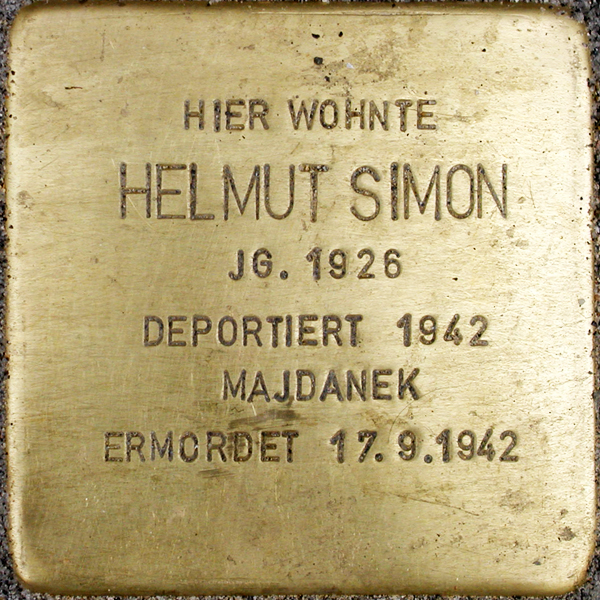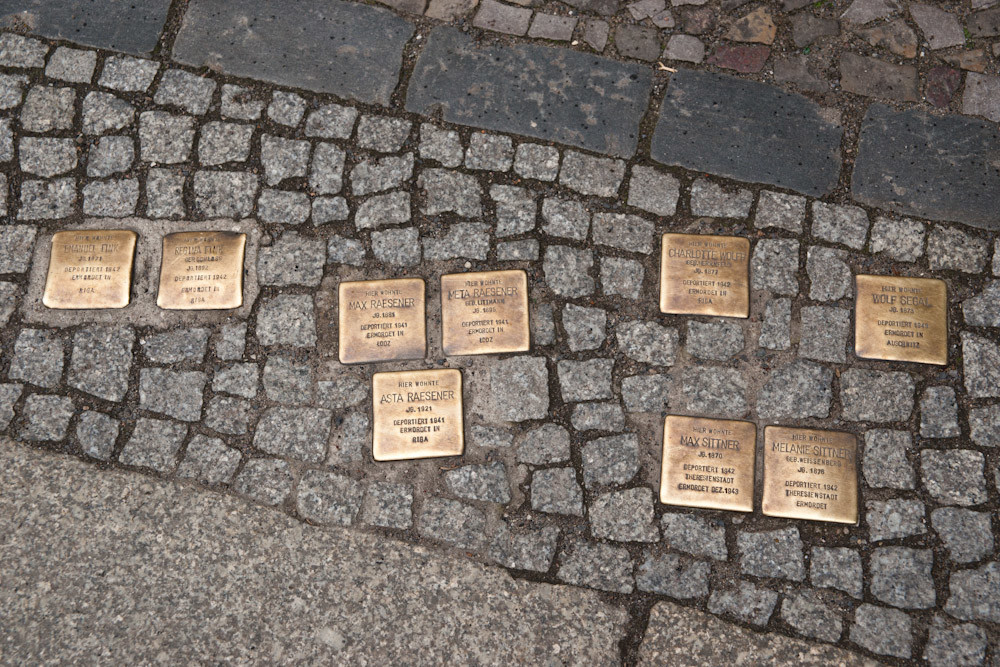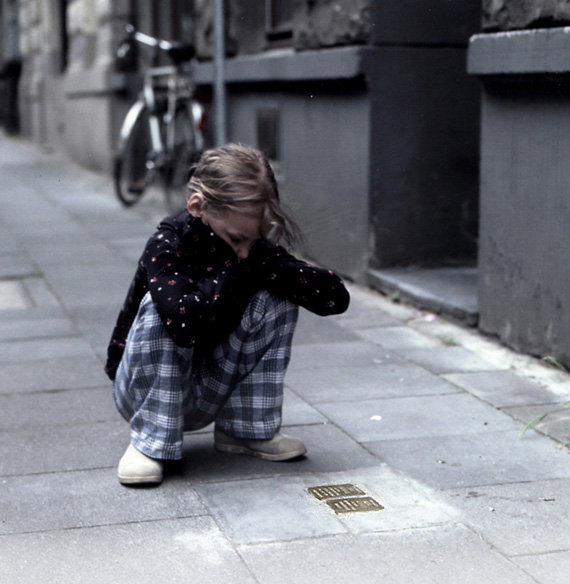I found myself coming home at night in Berlin and staring at the pavement. Once I’d seen the first Stolperstein, I started noticing them all over the place. Then I actively looked for them. Stolpersteine are literally ‘stumbling blocks’, brass covered cobbles embedded in the pavement, with the names of victims of the Holocaust engraved on them.

They are the idea of artist Gunter Demnig, who began the project of commemorating victims in 1995. So far, a total of 48,000 have been embedded in 18 countries, usually marking where Jewish victims used to live, but also Roma, Sinti, homosexuals and Jehovah’s Witnesses – all minorities persecuted by the Nazis.

It can be a strange, sobering experience to come across – to step across – a cluster of cobbles late at night, knowing an entire family, entire families had been removed from there.

They bring thoughts, too, about appropriation of houses and shops. The people who live there now, or their parents, are housed where others were evicted. The multi-national company securely on the boulevard is really a franchise on a graveyard.

I imagine too that the presence of Stolpersteine helps to humanise history and might spark many a conversation between parent and child. The city of Berlin has developed educational programmes – paths of memory – around these memorials:
The programme offers support to young people researching the lives of victims, helping place them in the historical context of the specific persecution they were subjected to. The idea is that they should learn about the many mechanisms of stigmatisation so that they can better recognise their continuities and become aware that any form of discrimination can have, and has had, radical consequences, including terrible suffering.

Photo: Karin Richert
There is a Stolperstein website with a map indicating the location of all the memorial cobbles in Berlin. And a documentary charts the development of the project.

Stolperstein – the documentary


2 thoughts on “Stumbling Blocks”